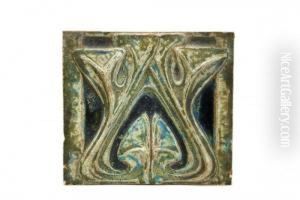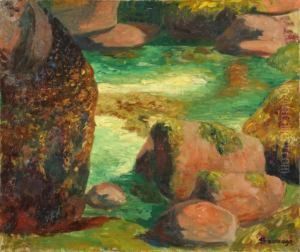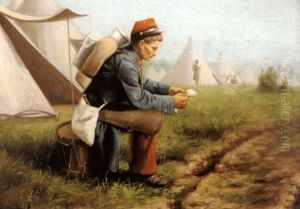Henri Charles Sauvage Paintings
Henri Charles Sauvage, born on May 10, 1873, in Rouen, France, was a notable French architect and designer associated with the Art Nouveau and Art Deco movements. He was also an early proponent of architectural innovation, particularly in the use of new materials and construction techniques.
Sauvage began his architecture studies at the École des Beaux-Arts in Paris under the tutelage of Jean-Louis Pascal. He was heavily influenced by the ideas of Eugène Viollet-le-Duc, which emphasized rational design and the truthful expression of materials. Early in his career, Sauvage was associated with the Art Nouveau movement, and he collaborated with the celebrated furniture designer Louis Majorelle, among others.
His architectural style evolved over time, and by the 1920s, he had become a leading figure in the emerging Art Deco style. One of his most famous contributions to architecture is the concept of the stepped-back skyscraper, which he first introduced in a competition entry for the design of the Tribune Tower in Chicago in 1922. Although his entry did not win, the idea influenced building design in the United States and around the world.
Sauvage was also a pioneer of social housing and believed in the importance of creating functional and affordable living spaces. He designed several residential buildings in Paris, which featured terraced constructions to provide light and air to each apartment, an innovation at the time. His focus on hygiene, comfort, and the well-being of residents was ahead of its time and reflected his commitment to social progress through architecture.
Throughout his career, Sauvage also took an interest in the decorative arts and designed a variety of objects, including ceramics and wallpapers, which displayed his versatility and creative vision.
Henri Sauvage's contributions to architecture went beyond his buildings; he also wrote articles and gave lectures, sharing his thoughts and theories on modern architecture. His ideas on rationalism and functionalism in architecture preceded the later work of architects such as Le Corbusier.
Sauvage's health declined in the late 1920s, and he retired from active practice. He passed away on March 21, 1932, in Paris. His legacy lives on through his buildings and his influence on the development of modern architectural principles.


